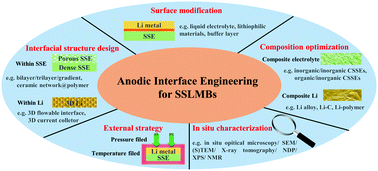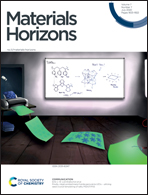Recent advances in anodic interface engineering for solid-state lithium-metal batteries
Abstract
Lithium (Li) metal is recognized as the “Holy Grail” in the energy storage field because of its high specific capacity and ultralow anodic potential. To realize high-safety and high-energy-density rechargeable batteries, the marriage of Li metal and high-safety solid-state electrolytes (SSEs) may be a promising and irreplaceable choice. In this case, various advanced Li-containing and Li-free cathodes, such as LiNi0.8Co0.1Mn0.1O2 (NCM811), S and O2, can be adopted to further improve the energy density of solid-state Li-metal batteries (SSLMBs). However, regardless of the complex interface problems between different cathodes and SSEs, the poor anodic interface between the Li metal and SSEs has become the critical obstacle for the commercial application of SSLMBs, mainly including (i) poor interfacial contact and dendrite growth, (ii) chemical/electrochemical instability and (iii) chemo-mechanical expansion. In this review, we analyze the aforementioned anodic interface problems in SSLMBs. Based on these facts, advanced strategies to ameliorate the anodic interface by surface modification, interfacial structural design within SSEs and the Li metal, composition optimization of SSEs and the Li metal, and external methods such as pressure control and high temperature are systematically discussed. In situ characterization technologies are also introduced to understand the dynamic evolution of anodic interfaces. Moreover, we outline the future perspectives of anodic interface engineering for SSLMBs.

- This article is part of the themed collection: Materials Horizons Lunar New Year collection 2021


 Please wait while we load your content...
Please wait while we load your content...